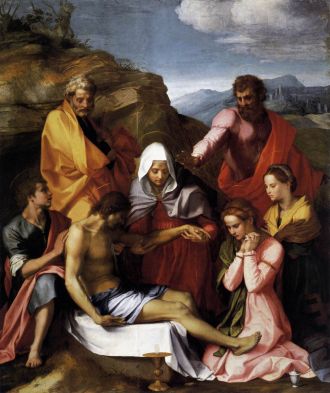 What are the qualities of the chalice and their meaning for our lives?
What are the qualities of the chalice and their meaning for our lives?
First, the precious metal in its dazzling beauty: a challenge to cleanse ourselves more and more from every stain of sin, and also from what is worldly and worthless. Then the insight into how precious our life is, our body and especially our soul, created in God’s image and likeness, predestined to share in the beauty of the Immaculata. This chalice, by itself, is quite empty, quite poor. Within it nothing of the world is found, not a speck of dust, nothing worldly, however beautiful it may be. This attitude of complete self-emptying, of complete detachment from self, of total spiritual poverty, is an essential feature of the Immaculata: she has nothing for herself, she does not think about herself, she is completely poor and emptied of self; one might say that her ego does not exist. This is the only possible attitude of the creature toward its Creator, when the latter bends down in infinite mercy to our nothingness in order to fill it. Then the chalice is quite open to what is above. The sides of the chalice are like the outspread hands of the Orante, full of longing and devotion. This is the virginal Heart of Mary, which lives in expectation of God and for God, as totally as a Bride for her Bridegroom. All her thoughts, words and deeds are directed toward Him, completely for Him. Mary gives us this longing for God and makes our hearts become pure of all disordered desires that pull us down.
This longing is fulfilled through consecration and communion. The open heart receives the divine light and the warm, flowing blood of life. This is the purpose for which the chalice exists, and for this alone: that the transformation might take place in it, i.e. that Christ might renew His life, His suffering and death in it. As Elizabeth of the Trinity puts it so profoundly: “May I be for Him an additional humanity, in which He can renew His mystery in its entirety.” But this involves the union of one’s will with God’s will, as completely as Mary was united with Christ in utmost obedience.
The liturgy emphasizes that not only the contents of the chalice are offered, but the chalice itself (“We offer to Thee the chalice of salvation…”), so as to suggest discretely that the one Sacrifice of Christ is nevertheless the sacrifice of Mary as well, that the submission of the New Adam is inseparably united with the submission of the New Eve: that of the Redeemer with that of the Co-Redemptrix. We all must place ourselves in this chalice like the little drop of water during the Offertory. As we are assimilated to the qualities of the chalice, we become a worthy vessel of God’s presence, filled and imbued with the Blood of Christ. A perpetual gaze upon the chalice is an immersion into her Immaculate Heart. Thus, we receive into ourselves Christ’s loving deed, in all its fullness.
Thus, Mary is the spiritual space, the holy atmosphere, the sanctuary, in which we are transformed, so as to understand and penetrate ever more deeply into the great divine drama and to receive interiorly all the fruits of this tree of life. “The Heart of Mary is the living altar upon which the sacrifice is offered. This pierced Heart is also the server at the altar, whose heartbeat is the liturgical responses. It is the censer, in which the faith, hope, love and adoration of the whole world ascends like incense before the Lamb who was slain. It is the choir of this formidable Mass, surpassing all the angels. Was not the silence of Mary’s wondrous sufferings like the singing of secret, ineffable songs to the enraptured ear of the bloody Victim?” (Fr. Faber)
Source: https://fsspx.news/en/news-events/news/chalice-symbol-mary-53449


